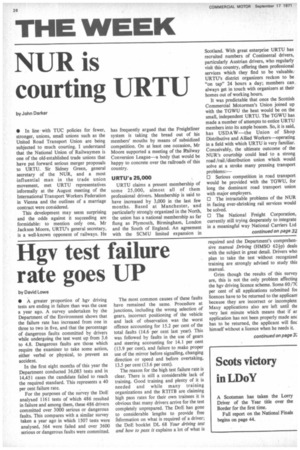Hgv test failure rate goes UP
Page 28

If you've noticed an error in this article please click here to report it so we can fix it.
by David Lowe • A greater proportion of hgv driving tests are ending in failure than was the case a year ago. A survey undertaken by the Department of the Environment shows that the failure rate has increased from one in three to two in five, and that the percentage of dangerous faults committed by drivers while undergoing the test went up from 3.6 to 4.8. Dangerous faults are those which require the examiner to take some action, either verbal or physical, to prevent an accident.
In the first eight months of this year the Department conducted 36,083 tests and in 14,451 cases the candidate failed to reach the required standard. This represents a 40 per cent failure rate.
For the purposes of the survey the DoE analysed 1161 tests of which 486 resulted in failure and among them, these 486 drivers committed over 3000 serious or dangerous faults. This compares with a similar survey taken a year ago in which 1507 tests were analysed, 564 were failed and over 3600 serious or dangerous faults were committed. The most common causes of these faults have remained the same. Procedure at junctions, including the wrong selection of gears. incorrect positioning of the vehicle and lack of observation was the worst offence accounting for 15.2 per cent of the total faults (14.6 per cent last year). This was followed by faults in the use of gears and steering accounting for 14.1 per cent (13.9 per cent), and failure to make proper use of the mirror before signalling, changing direction or speed and before overtaking, 13.5 per cent (13.6 per cent).
The reason for the high test failure rate is clear. There is still a considerable lack of training. Good training and plenty of it is needed and while many training organizations and the RTITB are claiming high pass rates for their own trainees it is obvious that many drivers arrive for the test completely unprepared. The DoE has gone to considerable lengths to provide free information on what is required of a driver; the DoE booklet DL 68 Your driving test and how to pass it explains a lot of what is




















































































































